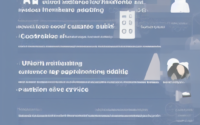Digital twins: Revolutionizing product design and development
Digital twins: Revolutionizing product design and development
Introduction to Digital Twins:
Digital twins are virtual replicas of physical objects, processes, or systems that can be used for various purposes such as simulation, monitoring, and control. By creating a digital twin, organizations can gain valuable insights into the behavior and performance of their products in real-time. This technology is revolutionizing product design and development by enabling engineers to make informed decisions and optimize their processes.
Benefits of Digital Twins in Product Design:
1. Improved Design: Digital twins allow engineers to test and simulate different design variations without the need for physical prototypes. This leads to faster iteration cycles and improved product designs.
2. Predictive Maintenance: By monitoring the operational data of the physical product through its digital twin, organizations can predict maintenance issues before they occur, reducing downtime and increasing overall efficiency.
3. Cost Savings: Digital twins help in reducing costs associated with physical prototyping, testing, and maintenance, leading to significant cost savings in the product development lifecycle.
4. Real-time Monitoring: With a digital twin, organizations can monitor the performance of their products in real-time, allowing for proactive decision-making and continuous optimization.
Implementing Digital Twins in Product Development:
1. Data Collection: The first step in creating a digital twin is to gather data from sensors, IoT devices, and other sources to replicate the physical object or system accurately.
2. Model Creation: Once the data is collected, engineers can create a digital twin model using simulation software and advanced algorithms to represent the physical object in a virtual environment.
3. Integration with IoT: To enable real-time monitoring and control, the digital twin needs to be connected to IoT devices to gather sensor data and provide feedback to the physical object.
4. Analytics and Optimization: Organizations can use analytics tools to analyze the data collected from the digital twin, identify patterns, and optimize the performance of the physical product.
Case Studies of Digital Twins in Product Design:
1. Aerospace Industry: Aircraft manufacturers use digital twins to monitor the performance of engines, predict maintenance needs, and optimize fuel efficiency.
2. Automotive Industry: Car companies create digital twins of vehicles to simulate crash tests, analyze aerodynamics, and improve overall design and performance.
3. Manufacturing Sector: Factories use digital twins to optimize production processes, monitor equipment health, and minimize downtime through predictive maintenance.
Challenges in Adopting Digital Twins:
1. Data Privacy and Security: Collecting and storing sensitive data in a digital twin raises concerns about privacy and security breaches, requiring robust measures to protect the information.
2. Interoperability: Integrating digital twins with existing systems and software can be challenging due to compatibility issues, requiring organizations to invest in interoperability solutions.
3. Skill Gap: Implementing digital twins requires specialized skills in data science, IoT, and simulation, which may not be readily available in all organizations.
Future Trends in Digital Twins:
1. AI and Machine Learning: The integration of AI and machine learning technologies will enhance the capabilities of digital twins by enabling predictive analytics, autonomous decision-making, and self-optimization.
2. Edge Computing: Edge computing will enable real-time processing of data from digital twins at the edge of the network, reducing latency and improving responsiveness.
3. Industry 4.0: The convergence of digital twins with other Industry 4.0 technologies such as IoT, cloud computing, and big data will drive innovation in product design and development.


